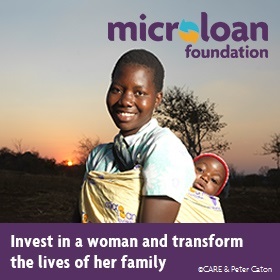Cutting-edge packaging technologies that are shaping the future of retail
Retail packaging is evolving rapidly. It’s not just about encasing products but enhancing safety, usability, and environmental friendliness.
This article explores emerging technologies revolutionising packaging for brick-and-mortar stores and online businesses. We’ll examine how these innovations benefit consumers and the environment and their implications for the future of retail. From plant-based containers to interactive tags, we’re transitioning into an era of intelligent, eco-conscious packaging.
The push for packaging innovation
Several factors are behind the surge in creative packaging ideas. Firstly, there’s a growing demand for products that are simpler to handle and kinder to the planet. People are looking for packaging solutions that avoid harming the environment and don’t need to just discard after one use.
Then there’s increasing legislation designed to make packaging more eco-friendly, and reduce plastic waste and its negative impact on the environment. In October 2023, the government introduced a new single-use plastic ban, which has had a significant impact on businesses, including takeaways and retailers.
Solutions for sustainable packaging
Sustainability now lies at the heart of packaging considerations. An increasing demand exists for products that are not detrimental to the environment, a trend that businesses are heeding. Sustainable packaging involves the use of materials and designs that are more benign to the Earth, including options that are recyclable, compostable, or reusable.
Biodegradable packaging is becoming increasingly popular. This type of packaging naturally decomposes, preventing landfill overflow. Some firms even produce packaging from biological materials like maize or mushrooms.
Not only do these substances safeguard products effectively, akin to plastic or cardboard, but they also transform into compost post-use and offer a more sustainable production method compared to traditional paper, sidestepping the need for deforestation.
Another strategy is to reduce the amount of packaging altogether. This entails creating packages with fewer materials from the outset. This approach benefits the environment and also reduces the amount of waste consumers have to manage.
However, the shift towards sustainable packaging isn’t without its challenges. Eco-friendly options often come with higher costs, and not all materials are compatible with every product. Furthermore, proper disposal methods must be known; otherwise, the environmental benefits are nullified.
Despite these challenges, numerous firms are advancing with sustainable alternatives, noticing that consumers tend to support environmentally conscious brands. As the market expands, the costs are expected to reduce, and sourcing suitable materials and designs should become more accessible.
Here are five advantages of eco-friendly packaging and examples to inspire you.
Improving the consumer experience
Innovative packaging represents another major trend. This is not just about aesthetics; it involves adding new functionalities that enhance the product’s value and interactivity. Advanced packaging can ensure product safety, provide valuable information to consumers, and make the shopping experience more enjoyable.
Tracking is another innovative feature. Certain intelligent packages can be monitored throughout the supply chain, offering consumers precise information about their product’s journey and expected arrival time. This is particularly valuable for online shopping, where timely delivery is crucial.
Additionally, there are innovations aimed at extending product longevity or ensuring safety, such as sensors indicating food freshness or packaging that changes colour when exposed to excessive air or light.
Customisation and personalisation in packaging
The trends of customisation and personalisation are reshaping packaging from a generic solution to a more individualised approach. Today, consumers desire products that feel bespoke and crafted specifically for them. Enter personalised packaging.
Such packaging can range from simply incorporating a customer’s name on a product to developing unique designs based on individual preferences. This trend is accelerating, facilitated by advancements like digital printing, allowing for the creation of individualised designs cost-effectively.
The advantages of personalised packaging are evident: it makes customers feel important and can transform an ordinary purchase into a distinctive experience. This has a particular appeal for gifts, special events, or just elevating daily items to something more unique. Brands are utilising this approach to deepen connections with their audience.
But it’s not solely about aesthetics. Customised packaging can also serve functional purposes, such as enabling consumers to easily identify a brand’s products or delivering information tailored to their specific requirements or interests.
The challenges and future prospects of packaging
While the future of packaging is illuminated with innovative prospects, significant obstacles remain. Firstly, the cost factor is substantial. Sophisticated materials and technologies, like intelligent systems and custom designs, can prove pricey to deploy, compelling businesses to weigh the benefits of innovative packaging against its financial impact, particularly in a fiercely competitive market.
Scalability poses another challenge. A feasible packaging solution for a small batch of products may not translate effectively to larger-scale production. This limitation can confine innovative packaging to niche or premium markets, diminishing its overall impact.
Acceptance by consumers is also crucial. Not all customers are prepared for significant changes, especially those that involve new technologies or alterations in their packaging handling or disposal habits. Educating consumers and demonstrating that new packaging solutions provide genuine value are critical for widespread adoption.
Despite these challenges, the outlook for the future of packaging is bright and filled with potential. As technology progresses and becomes more cost-effective, we are likely to witness a broader adoption of sustainable materials, innovative packaging designs, and personalisation options. The shift towards sustainability could further catalyse innovation, developing new materials and designs that lessen waste and environmental damage.
Furthermore, integrating AI technologies could revolutionise packaging, making it even more personalised and interactive. We could see packages that not only report their status in real-time but also suggest recipes based on their contents or automatically reorder themselves when empty.
In conclusion, while navigating the path towards innovative retail packaging is fraught with obstacles, the potential advantages for businesses, consumers, and the environment are vast. As businesses continue to investigate and invest in new materials, technologies, and designs, our perceptions and interactions with packaging are poised to change significantly.
The future of packaging extends beyond simple product enclosure; it encompasses creating a smarter, more sustainable, and highly personalised shopping experience.




